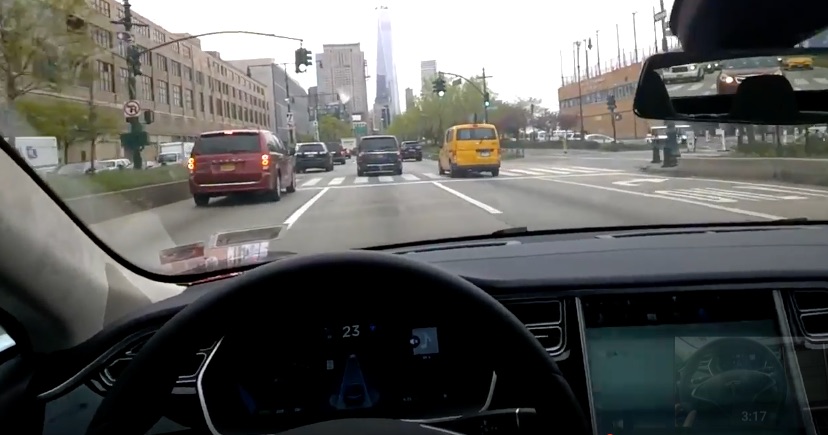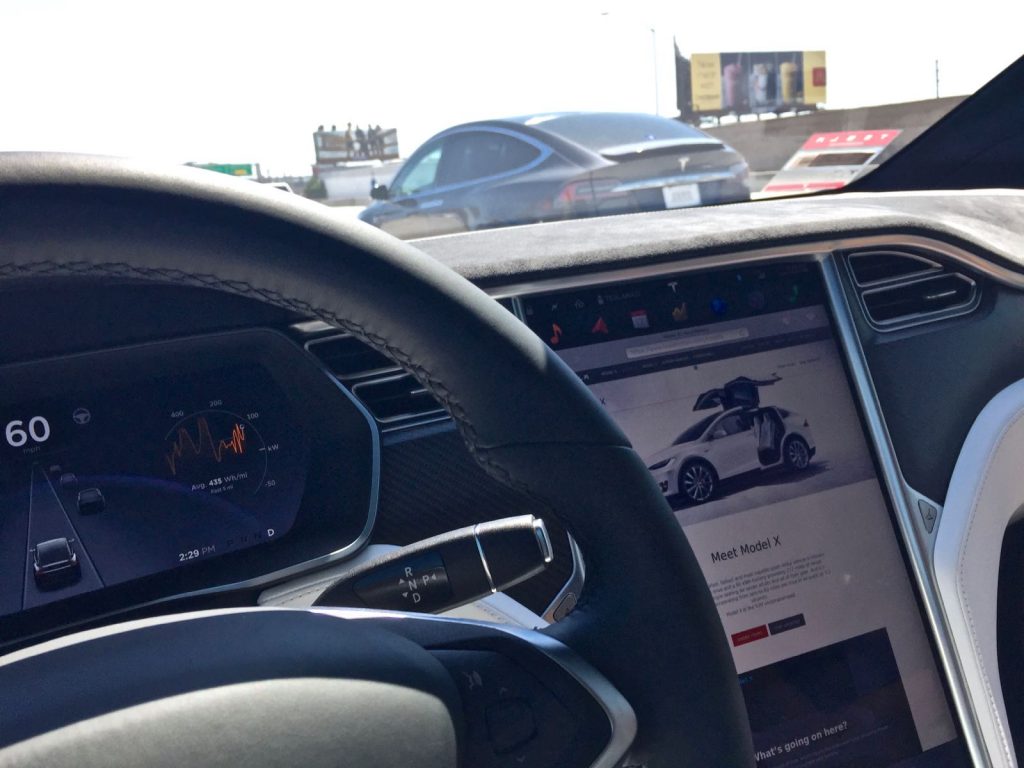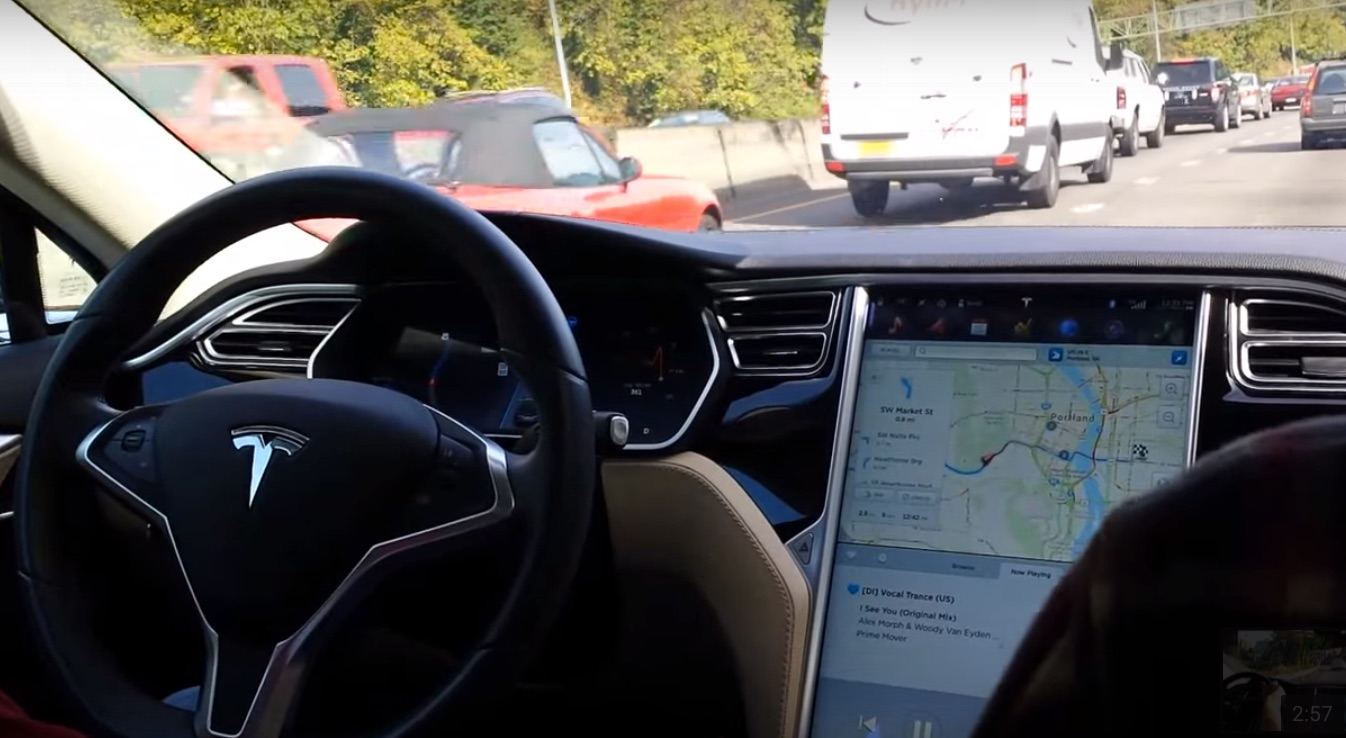

Lifestyle
Tesla Network could bring radical change to the way we own cars
Just one tap on your phone could summon a Tesla right to your house as you enjoy your morning coffee. Not a morning person? Don’t worry about needing to make small talk with your driver—this car is driving itself. Take your coffee with you, hop in, and travel in comfort and style wherever you want to go. All that, and your trip costs less than a bus ticket.
That is the future according to Elon Musk with his proposed autonomous ride-sharing “Tesla Network.”
The ambitious Tesla CEO expects all new cars to be fully autonomous within the next 10 years and that owning a “regular” non-self-driving car will be akin to owning a horse. According to Musk’s “Master Plan, Part Deux”— which he released in summer 2016 as a follow up to his 2006 “Secret Tesla Motors Master Plan”— Tesla’s objectives include the official development of “a self-driving capability that is 10X safer than manual via massive fleet learning” and the ability of “car to make money for you when you aren’t using it.” Given that the typical car owner only uses their vehicle during about 5 to 10 percent of the day, having your car make money for the other 90 to 95 percent of the day could be a pretty sweet deal. While you’re at work, asleep, or even on vacation, your Tesla could be driving around the city, picking up and dropping off passengers without any extra effort on your part.
Tesla ride-sharing
The Tesla Network has the potential to upset the established ride-hailing giants, like Uber, in significant ways. Yet, it also has the potential to simply never materialize. Which road the Tesla Network ends up driving down depends on how quickly Tesla can develop its autonomous technology— and how quickly people can begin to trust it with their lives.
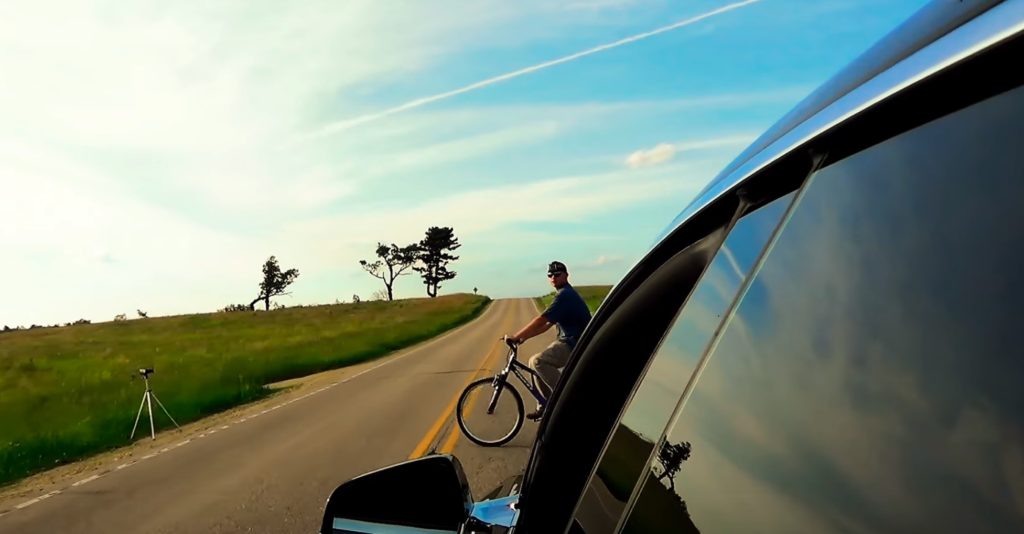
Tesla Model S owner tests human detection capabilities of Autopilot 2.0
All Tesla vehicles currently in production are equipped with the hardware necessary to support full autonomous driving in the future. For now, while Autopilot is impressive— it can change lanes, navigate traffic jams, and brake for obstacles with no human guidance needed—, it is far from perfect. The program is still technically in “public beta” testing, and rated by the National Transportation Safety Board as a 2 out of 5 on its scale of autonomy. To make up an effective fleet of self-driving vehicles riding around town while their owners are at work, Autopilot needs to be rated as a Level 5 on the NTSB’s scale. Musk predicts that Autopilot will be at true Level 5 autonomy within just two years. Even more ambitiously, he has announced that a Tesla will be able to drive completely autonomously from California to New York City by the end of this year.
Having this fleet could radically change the way that people get around each day. In a recent TED Talk, Musk said that the Tesla Network will provide cheaper transportation than public transport. This outcome would require both a large number of autonomous vehicles to be available to the public and would also require a large number of the public to use those vehicles. If both of these conditions are met, costs would plummet, potentially enough that Musk’s claim that riding on the Network “would cost less than a bus ticket” will come true. The owners of the Tesla Network fleet may have even more to benefit from the enterprise. By capitalizing on the average 95% of time their cars are simply parked in a garage or lot, Tesla hopes owners will be able to offset the relatively high cost of their vehicles or even exceed the cost and actually make profit.
However, just because one can own a Tesla with “Full Self-Driving Capability,” does not mean that they’re given free rein over the way they use that facility. Included in their order is a short, but important, disclaimer to sign: “Please note that using a self-driving Tesla for car sharing and ride hailing for friends and family is fine, but doing so for revenue purposes will only be permissible on the Tesla Network.”
The Competition
Musk is set on ensuring that the Tesla Network and its reputation grows in a controlled and organized fashion— and that the owner can’t use their car to support other competitors, like Uber or Lyft.
For those competitors, the Tesla Network threatens to disrupt their established leadership of the ride-hailing industry. Uber and Lyft, as well as automakers such as Cadillac, Audi, and Volvo, are furiously working to release their own Level 5 self-driving fleets of vehicles first, to take control of the market before anyone else can.
In a Business Insider interview, the president of GM, Dan Ammann, said most people won’t have their first autonomous vehicle experience in a car they actually own. Rather, he believes “it’s very clear that the first application of autonomous vehicles is in a ride-sharing setting.” GM has recently partnered with Lyft to develop autonomous vehicles. Tesla, meanwhile, is effectively locking Uber, Lyft, and other similar enterprises out of its Autopilot technology with its prohibition on using Tesla self-driving tech for revenue outside of the Network. Musk has implied that Tesla is not looking to be a direct competitor of Uber, saying, “It’s not Tesla versus Uber, it’s the people versus Uber.” On the other hand, Tesla rebuffed an offer last year by Uber’s former-CEO Travis Kalanick to partner in self-driving projects, as reported by Bloomberg.
Many people will use the Tesla Network to simply have experience riding in a Tesla that they may not be able to afford on their own. But for those who do own the coveted cars, how many will be willing to let others use their Teslas without supervision? Matthew DeBord of Business Insider notes, “Musk and his team are clearly thinking economically when they think about the Tesla Network. But they might not be thinking about how people really own cars — especially Teslas, which have around them a Ferrari-like halo of desirability.” Musk’s idea rests on the assumption that people’s desire to make extra money will outweigh their protective instincts of their Tesla. Of course, the advent of the mass-market Model 3, with a lower sticker price and higher availability, could affect this protectionism.
Safety First
The extent to which people are comfortable loaning their Teslas out will also depend on the degree to which the company is prepared to protect them from financial loss. When asked who bears the responsibility in a crash of a self-driving Tesla on the Tesla Network, Musk placed the majority of the burden on the owner of the vehicle. “I think it would be up to the individual’s insurance,” said Musk. “If it’s something endemic to our design, certainly we would take responsibility for that.” Uber and Lyft expanded their insurance coverage in 2015 to include liability insurance for drivers while they are “on duty.” It’s unclear whether Tesla owners would have a similar, if limited, safety net.
Of course, questions of insurance, liability, and use all depend on states giving permission to Tesla and others to use widespread self-driving technology first. Only a few states have any semblance of laws guiding self-driving cars’ testing and application, but Capitol Hill seems to be finally exploring the issue. A new bill being circulated in Washington would give federal regulators the power over self-driving tech, taking that authority from the states. Moving away from the patchwork of regulations, bans, and limitations between cities and states into a cohesive federal policy will help Musk’s Tesla Network grow in an organized and connected manner.
And even if regulators figure out how they want to control autonomous vehicles, Tesla still has to win the public’s trust to make the Tesla Network a widespread success. A 2017 Deloitte study shows that 74 percent of Americans don’t currently trust self-driving cars. Whether this is an easy fear to overcome or not is yet to be seen. But Musk’s ventures have consistently seen success in innovating first and asking questions second. The electric car, the reusable rocket, the solar roof, and the Tesla Network. The future is coming for us whether we’re ready or not.
Lifestyle
EV fans urge Tesla to acquire Unplugged Performance for edge in fleet and security industry
Unplugged Performance has built a name for itself by producing performance upgrades for Tesla vehicles.

A growing number of Tesla enthusiasts and longtime community voices are calling on the electric vehicle maker to acquire Unplugged Performance, a California-based aftermarket company best known for tuning Tesla vehicles and developing specialized government fleet solutions under its UP.FIT division.
The idea was once considered a niche proposal among EV fans, but it is now gaining serious attention not just as a performance play but as a strategic move to deepen Tesla’s roots in the fleet and security industry.
A strategic fit
Unplugged Performance has built a name for itself by producing performance upgrades for Tesla vehicles, from track-optimized components to visual and aerodynamic upgrades. But in recent years, its UP.FIT division has pivoted toward a more functional future by outfitting Tesla vehicles like Model Ys for police, military, and government use.
That work has sparked growing calls for closer collaboration with Tesla, especially as the EV maker increasingly leans into autonomy, AI, and fleet services as core components of its next chapter.
“I posted this four years ago, but I think it’s more true now than ever,” wrote Whole Mars Catalog, a well-known Tesla investor and FSD Beta tester, on X. “Tesla should buy Unplugged. But not just as a Performance division. What they are doing with UP.FIT unlocks large government and commercial fleet purchases that can improve utilization.”
Tesla fans such as shareholder Sawyer Merritt echoed the sentiment, calling Unplugged a “great fit within Tesla.” adding, “They are literally located directly next to Tesla’s design studio in Hawthorne.”
Enabling the next wave
Supporters of the idea noted that integrating Unplugged into Tesla’s corporate structure could help accelerate the adoption of autonomous technologies in government sectors. With UP.FIT patrol cars already in use across some U.S. police departments, Tesla fans envisioned a future where self-driving Teslas could potentially revolutionize law enforcement, search-and-rescue, and public service logistics.
“Just imagine how autonomous patrol cars could transform policing and bring us into a safer future,” the veteran FSD tester wrote.
The benefits could also extend to Tesla’s existing consumer base. “They also have some incredible products in the works that I think will appeal to many ordinary Tesla drivers — not just those looking for performance or mods. Stuff that’s so good it should have come straight from the design studio next door,” Whole Mars Catalog noted.
Unplugged Performance, founded in 2013, shares not just a product vision with Tesla, but also geography. Its Hawthorne headquarters sits directly adjacent to Tesla’s design studio, and the two companies have maintained a close working relationship over the years. The aftermarket firm has long positioned itself as a “mission-aligned” partner to Tesla.
In response to the recent calls for acquisition, Unplugged Performance acknowledged the support from the community. “Our very existence is to support the Tesla mission with @UpfitTesla and @UnpluggedTesla,” Unplugged CEO Ben Schaffer posted on X. “We love working with Tesla and are grateful for the community’s support since 2013!”
Elon Musk
X account with 184 followers inadvertently saves US space program amid Musk-Trump row
Needless to say, the X user has far more than 184 followers today after his level-headed feat.

An X user with 184 followers has become the unlikely hero of the United States’ space program by effectively de-escalating a row between SpaceX CEO Elon Musk and President Donald Trump on social media.
Needless to say, the X user has far more than 184 followers today after his level-headed feat.
A Near Fall
During Elon Musk and Donald Trump’s fallout last week, the U.S. President stated in a post on Truth Social that a good way for the United States government to save money would be to terminate subsidies and contracts from the CEO’s companies. Musk responded to Trump’s post by stating that SpaceX will start decommissioning its Dragon spacecraft immediately.
Musk’s comment was received with shock among the space community, partly because the U.S. space program is currently reliant on SpaceX to send supplies and astronauts to the International Space Station (ISS). Without Dragon, the United States will likely have to utilize Russia’s Soyuz for the same services—at a significantly higher price.
X User to the Rescue
It was evident among X users that Musk’s comments about Dragon being decommissioned were posted while emotions were high. It was then no surprise that an X account with 184 followers, @Fab25june, commented on Musk’s post, urging the CEO to rethink his decision. “This is a shame this back and forth. You are both better than this. Cool off and take a step back for a couple days,” the X user wrote in a reply.
Much to the social media platform’s surprise, Musk responded to the user. Even more surprising, the CEO stated that SpaceX would not be decommissioning Dragon after all. “Good advice. Ok, we won’t decommission Dragon,” Musk wrote in a post on X.
Not Planned, But Welcomed
The X user’s comment and Musk’s response were received extremely well by social media users, many of whom noted that @Fab25june’s X comment effectively saved the U.S. space program. In a follow-up comment, the X user, who has over 9,100 followers as of writing, stated that he did not really plan on being a mediator between Musk and Trump.
“Elon Musk replied to me. Somehow, I became the accidental peace broker between two billionaires. I didn’t plan this. I was just being me. Two great minds can do wonders. Sometimes, all it takes is a breather. Grateful for every like, DM, and new follow. Life’s weird. The internet’s weirder. Let’s ride. (Manifesting peace… and maybe a Model Y.)” the X user wrote.
Lifestyle
Tesla Cybertruck takes a bump from epic failing Dodge Charger
The Cybertruck seemed unharmed by the charging Charger.
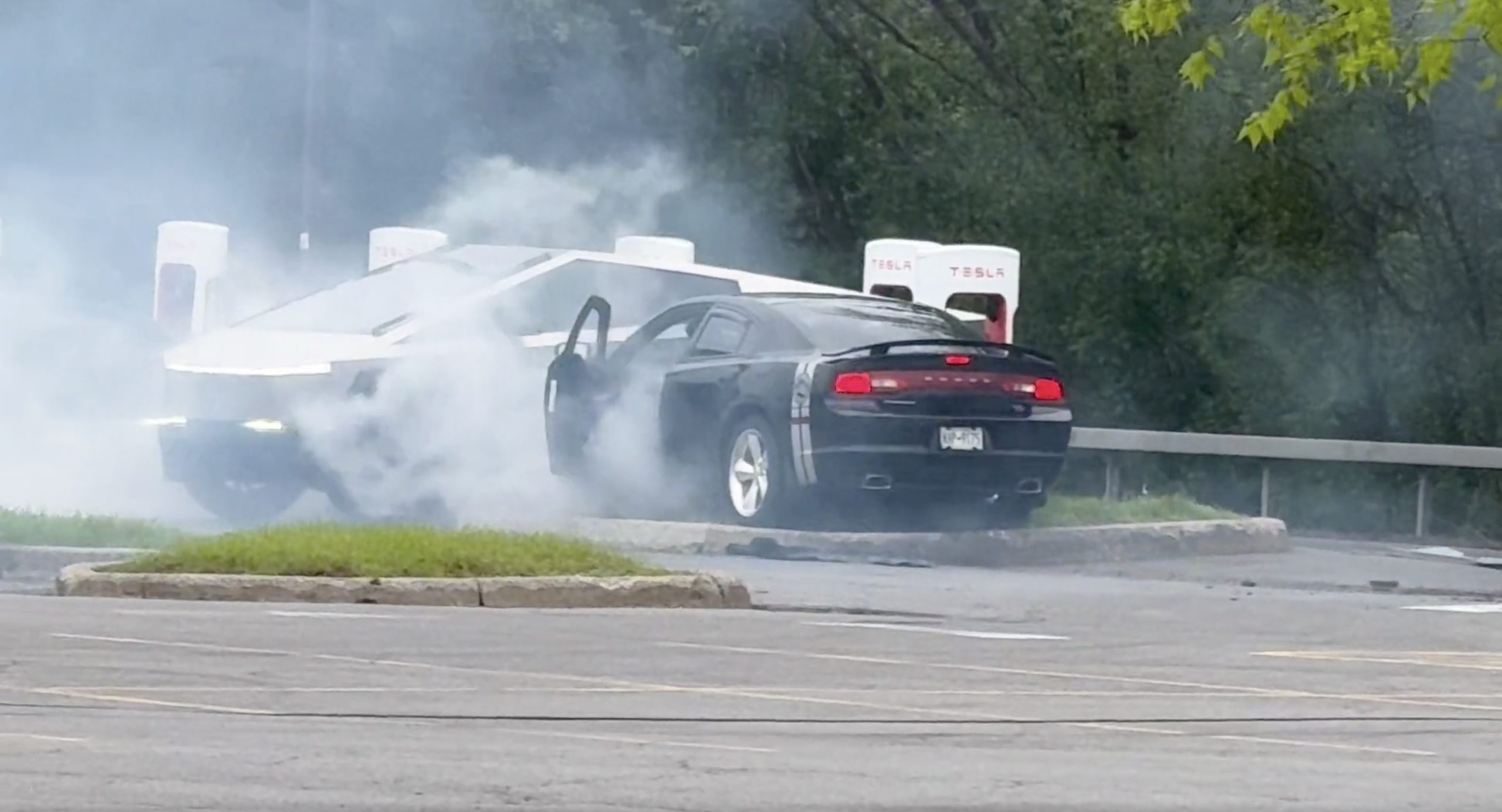
There comes a time in a driver’s life when one is faced with one’s limitations. For the driver of a Dodge Charger, this time came when he lost control and crashed into a Tesla Cybertruck–an absolute epic fail.
A video of the rather unfortunate incident was shared on the r/TeslaLounge subreddit.
Charging Charger Fails
As could be seen in the video, which was posted on the subreddit by Model Y owner u/Hammer_of_something, a group of teens in a Dodge Charger decided to do some burnouts at a Tesla Supercharger. Unfortunately, the driver of the Charger failed in his burnout or donut attempt, resulting in the mopar sedan going over a curb and bumping a charging Cybertruck.
Ironically, the Dodge Charger seemed to have been parked at a Supercharger stall before its driver decided to perform the failed stunt. This suggests that the vehicle was likely ICE-ing a charging stall before it had its epic fail moment. Amusingly enough, the subreddit member noted that the Cybertruck did not seem like it took any damage at all despite its bump. The Charger, however, seemed like it ran into some trouble after crashing into the truck.
Alleged Aftermath
As per the the r/TeslaLounge subreddit member, the Cybertruck owner came rushing out to his vehicle after the Dodge Charger crashed into it. The Model Y owner then sent over the full video of the incident, which clearly showed the Charger attempting a burnout, failing, and bumping into the Cybertruck. The Cybertruck owner likely appreciated the video, in part because it showed the driver of the Dodge Charger absolutely freaking out after the incident.
The Cybertruck is not an impregnable vehicle, but it can take bumps pretty well thanks to its thick stainless steel body. Based on this video, it appears that the Cybertruck can even take bumps from a charging Charger, all while chilling and charging at a Supercharger. As for the teens in the Dodge, they likely had to provide a long explanation to authorities after the incident, since the cops were called to the location.
-

 News3 days ago
News3 days agoTesla debuts hands-free Grok AI with update 2025.26: What you need to know
-

 Elon Musk1 week ago
Elon Musk1 week agoElon Musk confirms Grok 4 launch on July 9 with livestream event
-

 Elon Musk5 days ago
Elon Musk5 days agoxAI launches Grok 4 with new $300/month SuperGrok Heavy subscription
-

 News2 weeks ago
News2 weeks agoTesla Model 3 ranks as the safest new car in Europe for 2025, per Euro NCAP tests
-

 Elon Musk2 weeks ago
Elon Musk2 weeks agoxAI’s Memphis data center receives air permit despite community criticism
-

 News5 days ago
News5 days agoTesla begins Robotaxi certification push in Arizona: report
-

 Elon Musk2 weeks ago
Elon Musk2 weeks agoTesla scrambles after Musk sidekick exit, CEO takes over sales
-

 Elon Musk2 weeks ago
Elon Musk2 weeks agoTesla reveals it is using AI to make factories more sustainable: here’s how

